Driving in Costa Rica may seem intimidating, even if you're not behind the wheel. However, as you start driving, you'll find that it offers a level of freedom you don’t get with paid transportation. With the right preparation and a few insider tips, navigating the roads becomes not only manageable but one of the most rewarding parts of your trip.
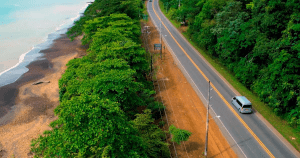
Driving in Costa Rica
All you need to drive in Costa Rica is a valid driver’s license from your home country and your passport (or a copy). Keep both on hand in case you’re stopped by the traffic police (which does not happen often).
The same rules apply here as in many countries:
That said, local drivers often bend or break these rules, so always stay alert and expect the unexpected.
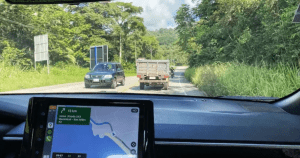
Driving in Costa Rica
In urban and tourist areas, you’ll find clear signage. Rural areas, however, may be a bit trickier to navigate. And of course, all road signs are in Spanish. Locals tend to navigate by landmarks rather than street names, so having GPS is essential. Waze and Google Maps work well, though service can drop in remote regions. Offline GPS usually works alright if you’ll lose service.
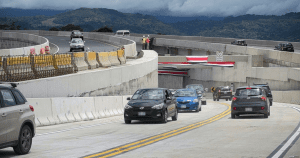
Driving in Costa Rica
Roads in Costa Rica range from well-paved highways to gravel roads. As a country that experiences a lot of rain half the year, potholes are a part of life! In the Central Valley and popular tourist areas, conditions are generally good. Outside those regions, expect more variation.
The country’s terrain is diverse—steep mountains, coastal plains, and everything in between—so plan routes in advance and consider a 4x4 for more remote areas or mountain-side lodging. When in doubt, consult your travel advisor for recommendations.
There are a couple ways drivers communicate with each other on the road:
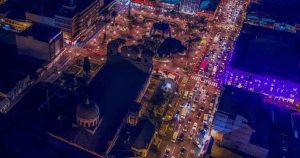
Driving in Costa Rica at Night
Sufficient streetlights are limited to towns and cities, and rural roads can be very dark and poorly marked. Rental cars should be equipped with high quality headlights, but if you are uncertain, avoid driving after dark. The sun sets around 6 PM year-round, so plan your routes accordingly.
Many rural bridges are single-lane. The CEDA (yield) sign indicates which side has priority. If you see a triangle CEDA sign at a one way bridge, that means you should give right-of-way to the other lane. Once no one is coming, or if they’re a ways off, you can cross. If you have the right-of-way, but the other lane is currently on the bridge, let them cross. Sometimes you need to be assertive to communicate to the other lane that you’re ready to take your right-of-way!
Police checkpoints are common near borders and along major routes. If stopped, officers typically check your passport, car papers, and trunk. These stops are routine and rarely cause issues. Most drivers are waved on to continue driving without stopping.
If you’re involved in an accident, call 911 and our Operations Support Team. Do not move your car until advised to do so.
Pedestrians and bicyclists
You’ll encounter pedestrians and cyclists everywhere, even on highways. In rural areas, they often lack reflective gear or lights. Be cautious, especially at night and when traveling at high speeds.
Motorcycles and dirt bikes
Motorcycles and scooters are common across the country. They may weave between lanes in cities or ride the shoulder to let cars pass on highways. Keep an eye on your mirrors (especially to notice if they are illegally driving on the right-hand side of the lane or shoulder) and give them space.
Trucks and heavy vehicles
Costa Rica is a major shipping route, so you’ll share the road with plenty of tractor-trailers. Some roads are narrow, so stay alert.
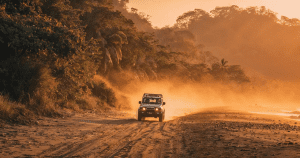
Driving in Costa Rica Off Road
Gas stations are full-service and government-regulated, so prices are consistent. They’re easy to find in cities but may be sparse in rural areas. You’ll be able to find gas stations easily with Google Maps. If travelling rurally, it’s always a good idea to top up whenever you can.
You’ll find a lot of people parking on the side of the road (or only partially off the road) in tourist areas, especially around an attraction like a waterfall or a beach. We always recommend looking for an official parking lot when possible. If not, it’s usually safe to park where others have also parked.
In populated areas, you might see people, often men, hanging out around parked cars, often wearing reflective vests. Locally known as “guachis” or “guachimanes) (aka “watchees”), these people will ask for a few coins to watch your car while it’s parked. They often will also help you enter and exit your spot. You do not have to pay them, especially if you are parked in an established parking lot or parking spot. If you do decide to pay them, anything from 500 to 1000 colones is appreciated.
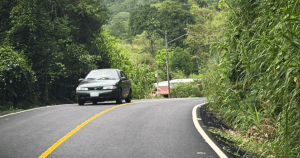
Driving in Costa Rica isn’t just about getting from point A to point B. It’s about discovering hidden beaches, quiet mountain towns, and the unexpected beauty along the way. With these tips, a little patience, and a sense of adventure, you’ll be ready to explore safely and confidently.
And of course, if driving in Costa Rica feels overwhelming or nerve-wracking, there are always a lot of options to pay for transportation, from private buses to shuttles and more. At Camino Travel, we can help you decide the solution that makes the most sense for your group and destinations.
Safe travels, and enjoy the ride!